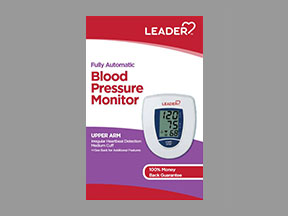
Blood Pressure Monitor Coupons & Savings Card – Discount Prices from $43.49
Our coupons are free to use. Before paying, show the pharmacist your Blood Pressure Monitor savings card to get your free discount. Use our filters below to edit the prescription box to match your needs. The Blood Pressure Monitor prices will update based on your prescription needs. Above our Blood Pressure Monitor coupons, you can change your location to see pharmacy prices and costs in other areas. We're here to help you buy Blood Pressure Monitor at the lowest price with our prescription discount card.
My prescription
Edit
1, Blood Pressure Monitor (1 Device)
Select pharmacy

Albertsons
$43.49
COUPON PRICE
Walgreens
$43.49
COUPON PRICEBlood Pressure Monitor savings card
Show this card to your pharmacist
Albertsons
$43.49
BIN
ID
PCN
GRP
011867
LH84A117C9
HT
LABH001
Powered by
Our coupons are free to use. Before paying, show the pharmacist your Blood Pressure Monitor savings card to get your free discount. Use our filters below to edit the prescription box to match your needs. The Blood Pressure Monitor prices will update based on your prescription needs. Above our Blood Pressure Monitor coupons, you can change your location to see pharmacy prices and costs in other areas. We're here to help you buy Blood Pressure Monitor at the lowest price with our prescription discount card.
Our coupons are free to use. Before paying, show the pharmacist your Blood Pressure Monitor savings card to get your free discount. Use our filters below to edit the prescription box to match your needs. The Blood Pressure Monitor prices will update based on your prescription needs. Above our Blood Pressure Monitor coupons, you can change your location to see pharmacy prices and costs in other areas. We're here to help you buy Blood Pressure Monitor at the lowest price with our prescription discount card.
